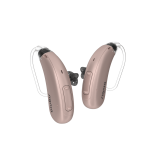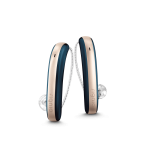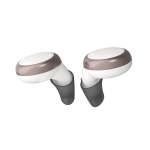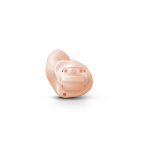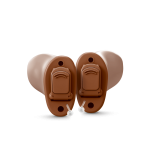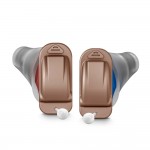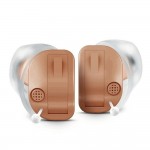How to Properly Dry Your Hearing Aids and Why It’s Crucial? | Aanvii Hearing

Hearing aids are sophisticated electronic devices that help individuals with hearing loss lead a more connected life.
However, just like any other electronic gadget, hearing aids can be vulnerable to moisture and humidity. Whether you’ve been caught in a rainstorm or spent time in a humid environment, it’s essential to understand how moisture can impact your hearing aids and how to dry them properly.
At Aanvii Hearing, we’re here to guide you through the process of drying your hearing aids and explain why it’s vital to do so.
Why Drying Your Hearing Aids Is Important
Water and moisture can cause significant
damage to hearing aids if not dealt with promptly. While the water itself isn’t
necessarily harmful, it’s the microscopic impurities and ions in the water that
can cause electrical damage. These ions can form a chain between two contact
points within the device. When the device is turned on, this chain can lead
electricity somewhere it’s not meant to go, causing a power shortage and
potentially damaging the hearing aid permanently.
Additionally, metal parts in the hearing
aid are susceptible to corrosion if exposed to humidity or water repeatedly.
Though manufacturers often coat metal components to prevent corrosion, this
protective layer may not be enough over time. Therefore, it’s crucial to take
proactive steps to keep your hearing aids dry and functioning optimally.
How to Dry Your Hearing Aids Effectively
Use a Hearing Aid Drying Box
One of the best ways to dry your hearing
aids is by using a hearing aid drying box. These compact devices use air and
heat to dry the hearing aids thoroughly. They are available for both
rechargeable and traditional hearing aids, making them a versatile option for
most users.
Also Read: Maximize Your Hearing Aids’ Performance with Expert Maintenance Tips

For traditional hearing aids, simply place
them inside the drying box, close it, and start the drying process. This
usually takes between 45 minutes to 8 hours, depending on the model. The drying
box helps maintain the integrity of your device, ensuring it stays free of
moisture and functions optimally.
Rechargeable hearing aids have the added
benefit of charging in the drying box. Just place your hearing aids in
overnight, and they’ll be dry and fully charged the next morning, ready for
use.
Also Read: The Importance of Drying Your Hearing Aids: A Comprehensive Guide
Non-Electronic Dehumidifiers
If you don’t have access to a drying box,
non-electronic dehumidifiers are another great option. Desiccants, like
pellets, discs, or linings, can absorb moisture from your hearing aids without
the need for electricity. These are convenient and portable, making them ideal
when you’re on the go or don’t have access to power sources. You can easily
find desiccants online or at your local pharmacy.
Protective Sleeves for Extra Defense
To prevent moisture from entering your
hearing aids in the first place, consider using water-resistant pouches or
sleeves. These protective covers, such as the Ear Gear pouch, safeguard your
hearing aids from rain, sweat, and other environmental factors. They are
particularly helpful for individuals who lead an active lifestyle or
participate in sports.
Proper maintenance of your hearing aids is
essential to ensure they function effectively and last for years. At Aanvii
Hearing, we recommend using drying boxes, desiccants, and protective sleeves to
keep your devices dry and in excellent working condition. Taking these steps
will help protect your hearing aids from damage caused by moisture, so you can
continue enjoying clearer sound and improved hearing every day.
Book a Free Hearing Test & Trial at Aanvii Hearing
If you have any questions about hearing aid care or need advice on the best drying solutions, don’t hesitate to reach out to the experts at Aanvii Hearing. We’re here to help you maintain your hearing aids and keep your hearing experience at its best. For more information call us at 96 5839 5839 or visit our website www.aanviihearing.com.

